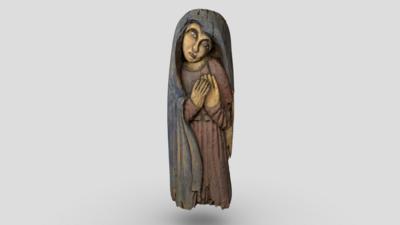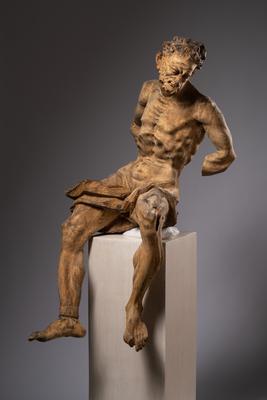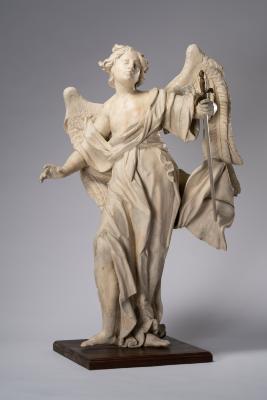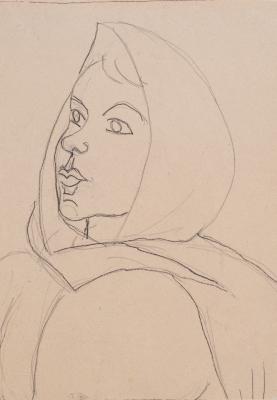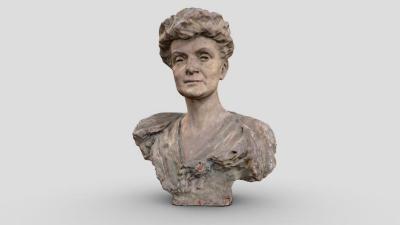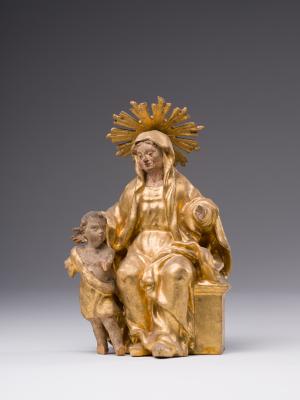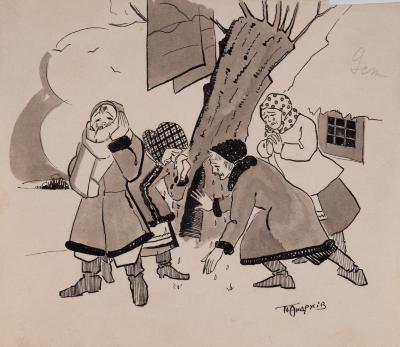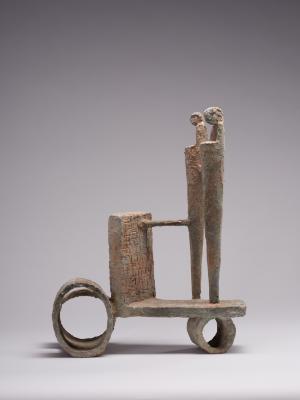At the beginning of the twentieth century, art critics described Kajetan Stefanowicz as a brilliant connoisseur and admirer of Eastern culture. Unfortunately, the artist's own dream, a trip to India, never came true because of the events of World War I. In the presented work, one can see skillfully combined aesthetics and spiritual practices of the East. The central female figure is depicted as withdrawn and meditating; on both sides, she is symmetrically framed by decorative ribbons of traditional Buddhist smokes, which rise above the stylized flowers (lotuses?). The symmetrical composition reflects the ideas of balance and harmony that are key to Eastern philosophy. Moreover, the smoothness of forms, complex movement of lines, as well as decorativeness and flatness of the image refer to the Secession style.











